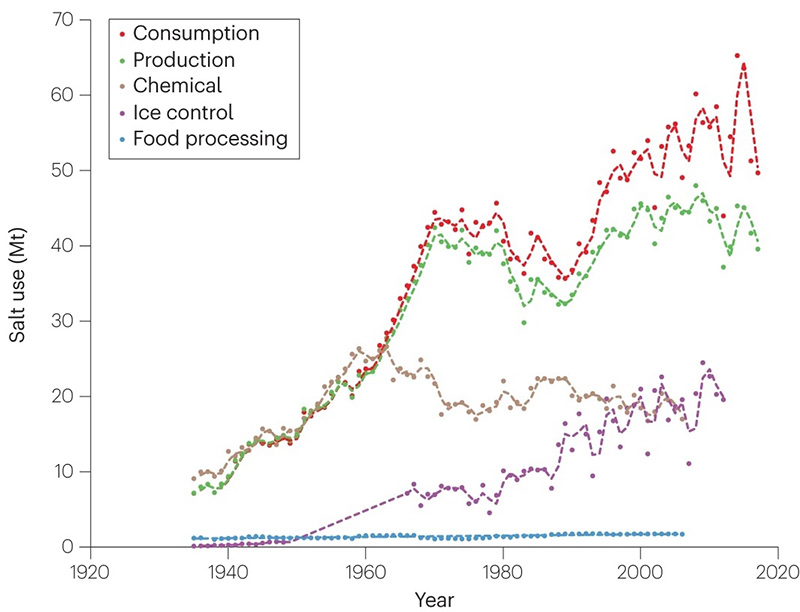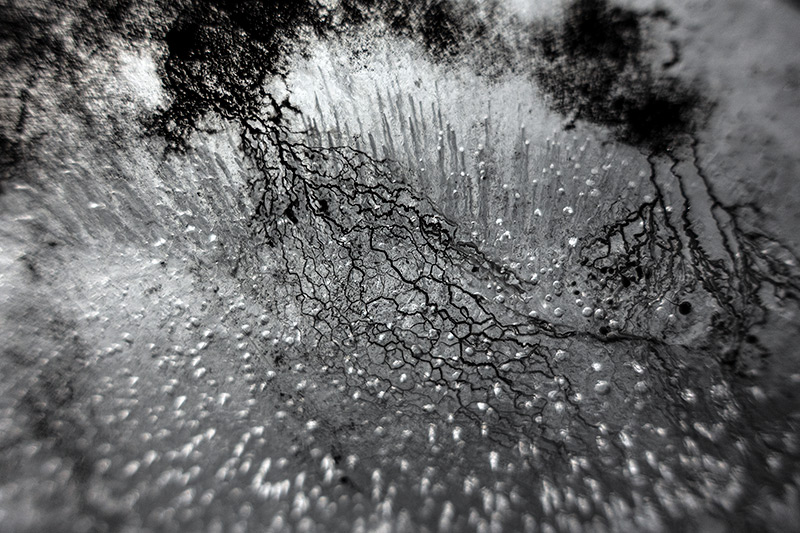we are damaging the planet's natural salt cycle affecting humans & wildlife in every natural habitat
Author: Distil Ennui | Post Date: 06-11-2023Human activity is disrupting another natural cycle on Earth that seems to be getting little attention, I hope that may soon change. Two years ago I wrote about how consumer bought sea salt from around the world has been contaminated by plastic pollution as microplastics become ubiquitous in the environment, finding their way into the food chain via the air we breath and the salt in our diets. With a high number of consumer salt contamination coming from microfibres and single-use plastics such as water bottles that make up the majority of injested plastic waste. in 2017 up to 12.7m tonnes of plastic entered the world’s oceans and has been rapidly increasing every year. That figure is the equivalent of dumping one garbage truck of plastic waste every minute directly into the world’s oceans.

PHOTOGRAPH © Ulet Ifansasti
Everything is linked in nature, it is not different with human salt usage, and the ripple effect of its dramatic increase over the past 100 years. A new paper released by the researcher team at the University of Maryland, the University of Connecticut, Virginia Tech amongst others who have combined recent data into a document described as an 'existential threat to global freshwater supplies'.
Salt production and consumption is rising globally, with the study looking at a variety of different salts including of course sodium chloride variety, the most readily used in cooking. The study collected data from a range of different environments, including salt concentration measurements in rivers, soils and lake drying events which are believed to be adding microscopic salts into the air.
The study shows that salt in fact moves through a cycle, from the deep inside the Earth to the upper atmosphere, and that has been significantly affected by human activity.
Findings show that an estimated 2.5 billion acres of soil worldwide has been affected by human-caused salinisation, and salts used to de-ice roads is also finding its way into the air, verifiable from the special compounds used.

global salt level usage graphed over the past 100 years
Of biggest concern is the increasing saltiness of freshwater sources. Predictive models suggest that finding enough drinking water for the world's population will be in serious trouble by 2030. The salt levels are now also having a huge effect on wildlife within natural habitats where water is becoming undrinkable or drying up completely through global warming.
Geologist Sujay Kaushal of the University of Maryland. says ‘ If you think of the planet as a living organism, when you accumulate so much salt it could affect the functioning of vital organs or ecosystems. ‘
Airborne salt levels have even linked to snow formation capacity and statistically affects respiratory illnesses levels in all species including humans.
The study is a calling for more research to be done to assess our impact on the salt cycle, last year around 25 billion kilograms of salt were thrown on US roads, to not consider its impact any longer is pure folly.
The research was first published in Nature Reviews Earth & Environment.
https://www.nature.com/articles/s43017-023-00485-y

'Plate 0882' from the 'Empirical Research & Evidence' series.
now that you are here, lets stay connected...
Join the mailing list.. Register
Telegram Channel.. DistilEnnui
Instagram.. AJHamilton.Artist
Twitter.. DistilEnnui